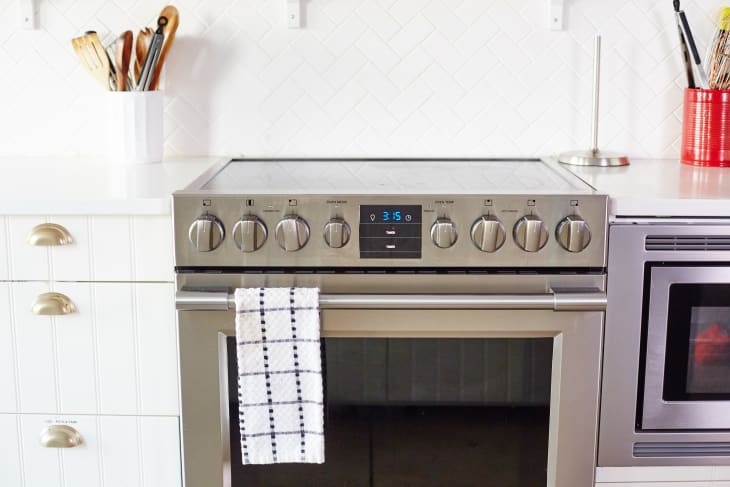What Is a Convection Oven, and When (and How) Do You Use It?
Raise your hand if you have a convection setting on your oven. Now, keep your hand up if you have no idea what the setting does and when or how to use it. That’s a lot of you! Luckily, we’re here to help and answer your biggest questions. Should you bake with the convection setting on? Are there times when it’s better than the normal setting? Why are we saying the word “setting” so much? To answer, find out what convection oven really is, when to use it, when not to use it, and more.
What Is a Convection Oven?
A convection oven has a fan and exhaust system that help blow hot oven air over and around the food, then vent it back out. As a result, this hot air surrounds the food so that it cooks evenly and more quickly.
What Is a Convection Oven, Anyway?
Very simply put, a convection oven has a fan and exhaust system that a regular oven does not. The fan and exhaust help blow hot oven air over and around the food, then vent it back out. As a result, this hot air surrounds the food so that it cooks evenly and more quickly.
A great way to describe this comes from Fine Cooking: “To help understand this, consider wind chill: When cold air blows against you on a blustery winter day, you feel colder more quickly than you do on a windless day of the same temperature.” The same applies with heat and convection cooking! Turn on the setting and the fan and exhaust kick into gear.
Why Should You Use the Convection Setting?
- It cooks faster. Because hot air is blowing directly onto food instead of just surrounding it, food cooks about 25% faster in a convection oven.
- It cooks more evenly. Regular ovens can have hot spots, depending on where the heating element is, but the fan in a convection oven will circulate the air to help even out the temperature variances.
- It’s better at browning. Air in a regular oven can become a bit humid, as moisture can’t escape. Convection creates a dry atmosphere that caramelizes the sugars faster when roasting, so foods like meats and vegetables get browner, but the interiors stay moist.
- It saves energy. Because food cooks faster in a convection oven, and generally at a lower temperature, it’s a bit more energy-efficient than a regular oven.
When Should You Use the Convection Setting?
Because there are so many benefits to convection, you’re probably wondering why most convection ovens still have a regular oven setting. Depending on what you’re making, there are many instances when you’ll want a fan circulating hot air around.
- Any time you’re roasting: Foods that are roasted, like meats and vegetables, really benefit from convection cooking. They cook faster, more evenly, and the drier environment yields crispy skin and caramelizes exteriors much better.
- When baking pies and pastries: Convection heat melts fat and creates steam faster, which helps create more lift in pie doughs and pastries like croissants.
- When making lots of cookies: Convection allows you to bake more than one tray of cookies at a time evenly without the need to rotate them partway through baking.
- Any time you’re making something that’s cooked with a cover: If you’re covering up the food with a lid, like a braise, or covering a casserole dish with foil, moisture loss is not an issue, so you might as well cook on convection since it’ll cook faster.
- When you’re toasting or dehydrating: When you toast or dehydrate food, the goal is to remove moisture as quickly as possible, so convection is more efficient than regular.
When Not to Use the Convection Setting
The fan becomes a liability around delicate foods that start out as batter and set while cooking. Blowing air on these foods can create lopsided results. Don’t use convection when making these foods:
How to Use the Convection Setting
If you’ve decided to use the convection setting, here are a few things to keep in mind:
- Lower the temperature: Lower the recommended oven temperature by 25°F.
- Check earlier: Because food cooks more quickly on convection, check on it two-thirds or three-quarters of the way through the recommended cooking time and make any necessary adjustments.
- Make sure air can circulate: Convection is only effective if the air can circulate well over the food. Use trays, roasting pans, and baking pans with lower sides, and don’t cover the oven shelves with foil.
Don’t be afraid of your convection oven — embrace this great feature! Play around with it and you’ll probably be amazed by the results.
